ERVIN LATIMER “DESIGNERS WIELD A LOT OF POWER”
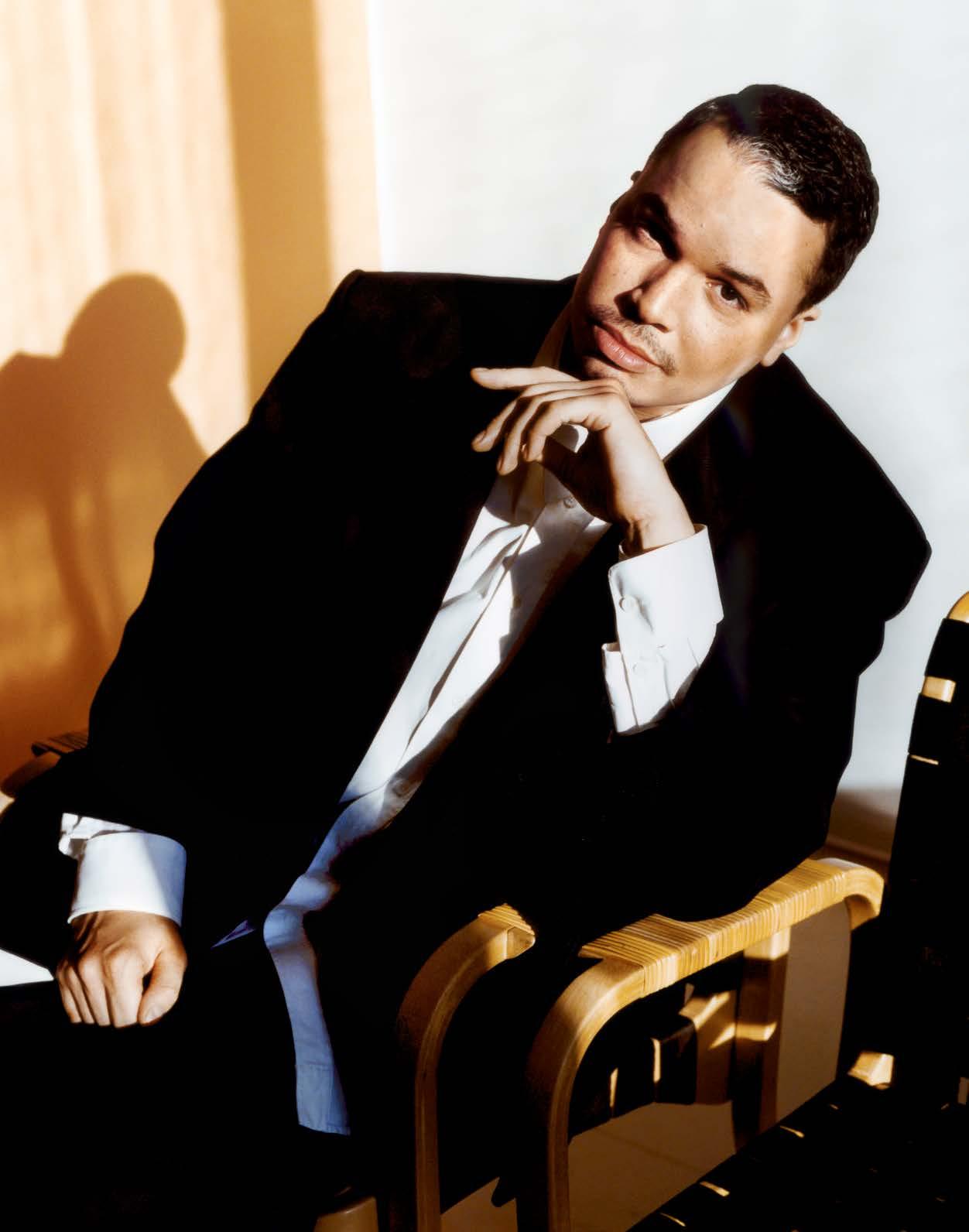
FROM DONKEY KONG TO ALAN WAKE HOW VIDEO GAMES EVOLVED INTO ART
INSIDE THE HOMES OF PEOPLE WHO USED TO BE HOMELESS
WHY SAUNAS ARE HOTTER THAN EVER
2024–25
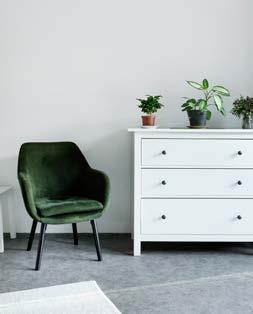
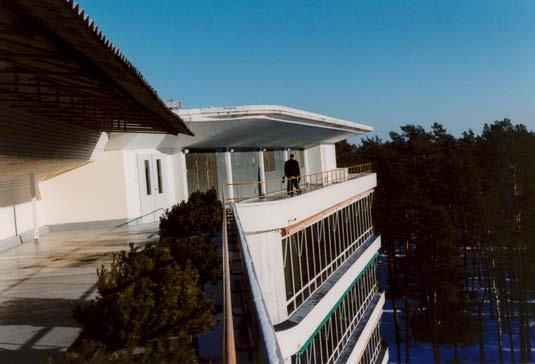

The photo and video shoot for our cover story about fashion designer Ervin Latimer took place at Paimio Sanatorium, an architectural masterpiece designed by Aino and Alvar Aalto in 1929. The February sun bathed the spaces in light, creating a magnificent setting for the photos. The sanitorium is very familiar to me as I’m from Paimio, and after high school, I worked there as a tourist guide for one summer. Still, the location never fails to captivate with its functionalist beauty.” VIDEO PRODUCER EEVA KYLÉN
“ 3 FROM THE EDITOR 4 COVER STAR ERVIN LATIMER Can fashion be inclusive? 10 VIDEO GAMES The art of interactive storytelling. 16 PHOTO ESSAY Formerly homeless people share what they love most about their homes. 24 SCIENCE Wood for thought – 7 innovations to get excited about. 26 THE GLOBAL SAUNA BOOM Architect Sami Rintala designs saunas all over the world. 32 ACCESSIBLE OUTDOORS Artist Kaisa Leka wants to ensure nature is for everyone. 34 FOOD Five reasons you should love porcini mushrooms. 36 HAPPINESS Expats reveal how they see and feel happiness in Finland. 40 TRAVEL What makes Finland the promised land of summer festivals? 4 16 32 FROM OUR CONTRIBUTORS 2
ONE LIFE, FOUR SEASONS
FINLAND LIVES and breathes the rhythm of the four seasons – the Finnish happy-go-round.
Long, warm hours of daylight during the summer months cater for an outdoor extravaganza of festivals and events in all imaginable locations. Autumn is high season for colourful foliage and outdoor activities, but when we return to work and school, we also rediscover libraries and game consoles and curling up on our comfy sofas with a good book. Winter arrives with action-packed sports on ice and snow, but the shorter days also give you permission to slow down your pace. Spring brings increasing light, melting snow and, for some, weekends devoted to getting boats and kayaks shipshape for the upcoming season. Summer is just around the corner and I’m ready to roll!

Perhaps I am growing sentimental with each year that passes, but I can’t help it. Various events in my cultural calendar are very dear to me. As this magazine goes to print, I’m counting the days to the season opener of the Finnish football league. And I regularly check to make sure that the three-day early-bird ticket I purchased to my favourite music festival is still in the shoebox where I put it for safekeeping. E-tickets are smooth, but I can’t put them in my scrapbook.
This issue of This is Finland Magazine offers a wide variety of Finnish culture: fashion, gaming, sauna, architecture, festivals and, yes, mushrooms. We also take a look at accessible outdoor activities, the Housing First policy initiative and wood-based innovations. Enjoy!
EDITOR-IN-CHIEF Mika Hammarén
EDITORIAL BOARD Mika Kukkonen, Samuli Laita, Peter Marten, Meira Pappi, Salla Salovaara, Tuula Sjöstedt
EDITORIAL STAFF Sanoma Content Marketing
COVER PHOTO Mikael Niemi
PRINTED BY Grano Oy
PUBLISHERS Ministry for Foreign Affairs of Finland um.fi, Business Finland businessfinland.fi, Sitra sitra.fi
ISSN 2343-2624 This magazine is printed on UPM Finesse Premium Silk –a woodfree, coated silk paper. UPM Finesse Premium Silk has FSC certificate and fulfils the Nordic Swan criteria.


25 Printed matter 4041 0955 NORDICSWAN ECOLABEL 2024 3
TEXT MIKA HAMMARÉN PHOTOGRAPHY NINA KARLSSON

FASHION F O R PEOPLE
Finnish–American designer Ervin Latimer believes fashion needs to change, not people. He designs for a variety of bodies and genders. Latimer’s uncompromising design philosophy has made waves at renowned fashion week events such as Copenhagen Fashion Week and Pitti Uomo.
TEXT KRISTIINA ELLA MARKKANEN PHOTOGRAPHY MIKAEL NIEMI MAKE-UP AND HAIR MARIA BOUCHT PHOTOGRAPHER’S ASSISTANT SEVERI UUSITALO 4

5
Ervin Latimer was photographed in Paimio Sanatorium, an architectural masterpiece from the 1930s and home for design icons such as the Paimio chair by Artek.

6
From the pages of Vogue to a Finnish hypermarket, Ervin Latimer designs clothes that work for almost any body type, gender or occasion.
FASHION DESIGNER Ervin
Latimer seems to fit comfortably between high fashion and mass market. He shows his clothing at prestigious international fashion weeks and then designs pieces for a Finnish hypermarket chain. He might host a runway show in bright red drag but considers himself pragmatic. His collections have been featured in Vogue but he doesn’t care who wears his designs.
Latimer’s clothes resemble traditional menswear silhouettes such as two-piece suits and button-up shirts, but they are designed to be worn regardless of the wearer’s gender, body shape or identity. Little tweaks make the clothes adjustable to different bodies and occasions.
“I design clothes that represent masculinity. They’re not meant for a specific gender, but for people who want to express or perform masculinity,” he says.
This brings us to the main tenet of Latimer’s design philosophy: he is, first and foremost, a values-driven designer. He stands for gender equality and equity, inclusivity, anti-racism and queer culture – all important parts of his identity, too, as the homosexual son of a Finnish mother and an African American father.
“Designers wield a lot of power. We share our visions of what we think people and their bodies should look like, and how they can or cannot express themselves. I feel like I am responsible for creating an inclusive and equitable vision,” Latimer says.
He wants people who are curious about their masculine
side to look at his clothes and think, oh, I can see myself wearing this. This is for me. He also wants his clothes to be practical for sitting in a bus as well as in a limousine.
A career born out of finding one’s footing
Latimer’s brand Latimmier was born out of the designer’s search for his place in society, wanting to see himself and his values represented in the world around him. There have always been and still are marginalised groups of people who are not as visible as others, Latimer says. Founding a creative brand was his way of positioning himself in a continuum of lesser-represented creatives in this country – and
finding what Finnishness looks like for him.
It was never Latimer’s childhood dream to become a fashion designer. However, from an early age he watched his aunt effortlessly knit jumpers and her grandmother do crafts at home. He studied visual arts in high school, where he didn’t feel out of place in the upcycled clothes he’d bought at flea markets.
He worked in retail while studying fashion design at a University of Applied Sciences, and eventually got his master’s at Aalto University’s reputable fashion design programme. He also co-founded and was the managing editor of Ruskeat Tytöt Media, Finland’s first culture media for Black,
“I FEEL LIKE I AM RESPONSIBLE FOR CREATING AN INCLUSIVE AND EQUITABLE VISION.”
Indigenous and people of colour (BIPOC).
Launching with a bang
Latimer remembers the first time he was interviewed by Finnish news outlets. Soon after showcasing his grad collection he had been awarded the title of Finnish Young Designer of the Year, a prize given to promising design students annually since the 1990s.
Latimer put his original twist on the competition’s theme: multifunctionality. He used his newly found platform to highlight issues he wanted to tackle in the industry.
“Usually, a body has to adapt to a piece of clothing. You must be a certain shape or size to fit in a certain piece. But what if it was the other way around? What if a piece of clothing could adapt to a person’s body?”

7
Paimio Sanatorium. Like Latimer, architects Alvar and Aino Aalto believed great design should be accessible to all.

“IF THE BRAND IMAGERY IS VERY INCLUSIVE, BUT THE COMPANY ITSELF ISN’T, THAT’S NOT SUSTAINABLE.”
So he designed clothes that were adjustable, reversible and gender-neutral –aesthetic and meticulously tailored, yet wearable and approachable.
In January 2022, Latimmier the brand was launched with a bang at Pitti Uomo, the world’s leading menswear event in Florence, Italy. Latimer took to the stage as his drag queen alter ego Anna Konda to introduce his collection.
The oversized suits with intentional slashes and gaps were designed to play with the concept of masculinity and were worn by models of different genders, body types
to implement positive change in attitudes.
“I’d like to shine a light on what happens behind closed doors in company boards and executive teams. Who calls the shots and who profits? Who gets the opportunity to work and why? If the brand imagery is very inclusive, but the company itself isn’t, that’s not sustainable,” he says.
Latimer practices what he preaches. He recently designed a gender-neutral collection for K-Citymarket, a hypermarket chain owned by Finnish retail giant Kesko. It was the first time in its history that the chain sold gender neutral clothing.
sometimes that blinds me: I forget my boundaries. I’ve learned it the hard way, but I don’t want to make compromises when it comes to resting. At the end of the day, I’m just human,” he says.
The people he employs are fairly compensated. If that’s not possible, he doesn’t hire interns. These things might sound self-evident to a layperson but are not very common in the fashion industry.
and sexual identities. Among others, the New York Times covered the show and its roots in drag culture. Ervin Latimer had officially arrived.
Practice what you preach
Outside the spotlight, Latimer has spent a lot of time thinking about how to justify the existence of yet another clothing brand. The world doesn’t need any more textiles, he agrees. What it does need, though, are fair workplaces, sustainable working conditions and fresh air blown into an industry that’s based on exclusivity and restrictiveness. In other words, he uses his skills as a designer
The Freedom collection did what Latimer tends to do: it broke the norm. The clothes have the feel of designer clothes (sharp button-up shirts, luxurious loungewear), but they’re meant for all kinds of bodies. The collection was modelled and photographed by a diverse team, and some of the prints were designed by Finnish-Guinean queer artist, Gabby Electra. The clothes were made in Europe.
“According to Kesko’s survey, every second Finn occasionally buys clothes at a hypermarket. If you want to influence consumer behaviour and attitudes, you have to be where people make their purchases.”
No more burnouts
Ervin Latimer is also a vocal advocate for humane working conditions. Having been through burnout, he doesn’t want to overwork himself or anyone else.
“I’m lucky to get to do this work on my terms, but
“I’ve done internships and junior positions in big fashion houses and seen how ruthless it can be. I have a chance to do things differently. A lot of heritage brands are constantly talking about making a better tomorrow. Why wait until tomorrow, if you can improve now?”
Settling down in the country he calls home
Latimer isn’t sure whether it is for him to say if he has found his place in the design landscape yet. He’s in his mid-30’s, his brand is young, and right now he wishes he could keep doing what he does for a long time – in a way that’s sustainable in more ways than one.
Part of why Latimer likes his home country Finland so much is its infrastructure, which often makes his life easier. He has lived and worked in the United States and Italy, among others, and enjoys their big cities and opportunities. But it’s the little things here that he appreciates the most: reliability and practicality.
“Even on those Fridays when I’m exhausted after a long work week, I can always count on the bus being on time and taking me home.”
8
Paimio Sanatorium’s architecture reflects the Aaltos’ deep understanding of light.


9
Watch Ervin’s video interview:
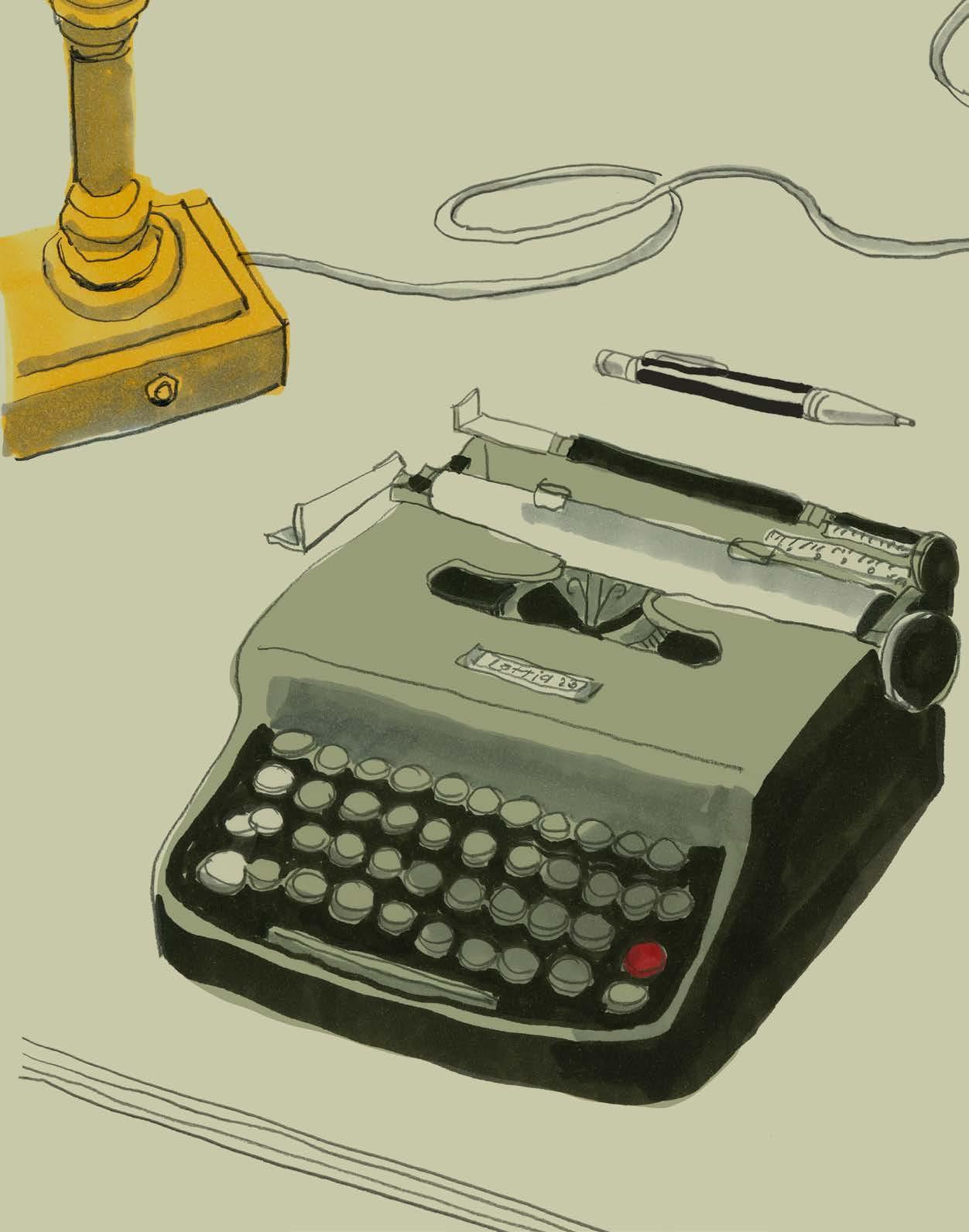
ANJA
10
TEXT JOHANNA TEELAHTI
ILLUSTRATION
REPONEN
VIDEO GAMES – ART
YOU CAN BE PART OF
They reflect the society, they make us cry, they make us hold our breath in anticipation. Video games combine several forms of art, but they’re built on the power of interactive storytelling. Makers of the global hit series Alan Wake from the Finnish video game developer Remedy Entertainment tell us how it’s done.
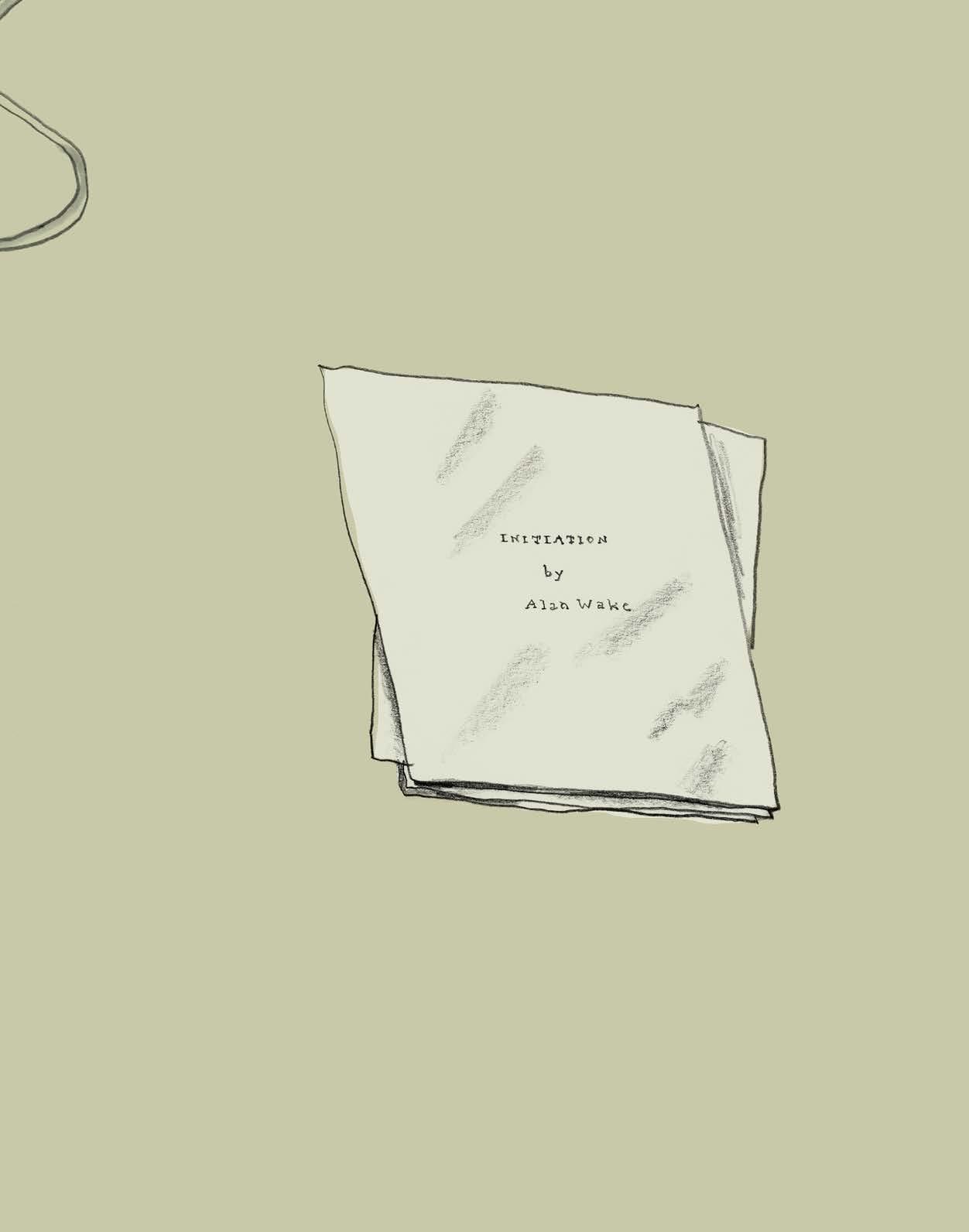
DO YOU consider video games to be art?
Experts on the subject certainly do.
The Smithsonian American Art Museum, New York’s Museum of Modern Art and the Victoria and Albert Museum in London are only a few of the many distinguished institutions that have chosen to include video
games in their art collections in the last decade.
And why shouldn’t they? Games are the joint result of tremendous artistic effort by illustrators, animators, screenwriters, composers, designers and directors, woven together by the skilled hands of programmers.
More importantly, they often have just as much to say about the world around us as any Coppola film or Dalí
painting. Today’s game developers boldly tackle tough subjects from childhood cancer to gender inequality and strive to evoke deep emotion in their audiences.
“I’m very passionate about the idea that what we’re making is art. Our creative ambitions are high and artistic expression is an important focus point for all our projects,” says Sam Lake (born Sami Järvi; järvi means “lake” in
11
1971
The first commercial video game COMPUTER SPACE is released. It is a very simple action game in which the player attempts to shoot down flying saucers in outer space. Before this, games had not been easily available to the wider public.
1976
The first text-based adventure game COLOSSAL CAVE ADVENTURE is published. In it, players get to explore a mysterious cave filled with treasure. It becomes the first well-known piece of interactive fiction – and thus the first hit game with a story.
1981
Nintendo’s classic arcade game DONKEY KONG becomes one of the first video games to ever marry graphics and story together. Through simple cutscenes, Donkey Kong tells the story of a carpenter trying to rescue his girlfriend from the clutches of an enraged ape.
1983
Jaron Lanier’s trippy musical experience MOONDUST is widely considered to be the first “art game”. Critics of the time described it as being “more like ballet than combat”. Moondust has no story to speak of but makes use of complex graphics and an algorithm-generated soundtrack.
1986
FAMITSU , the oldest journalistic publication dedicated to video games – still in circulation – is established in Japan. Today, many mainstream media outlets cover industry news and review new games.
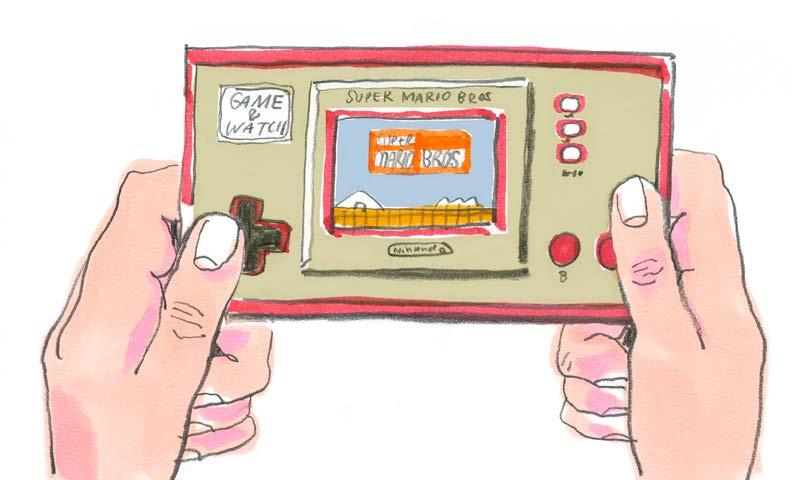
Finnish), creative director of the Finnish game studio Remedy Entertainment.
Art comes in many forms, from masterwork paintings to music, but Lake’s personal specialty is storytelling. Remedy is globally known for narrative-driven games that purposely push the boundaries of the video game format.

“The way games tell stories is what makes them unique as a medium and an art form, because the player gets to be an active participant in them,” he explains. “A good story is a good story, regardless of the medium, but a video game involves the player in it.”
Early endeavours
To some, the fact that video games even have stories may come as a surprise. In the space of only a few
decades, games have evolved from simple tests of reflex to cinema-worthy experiences brought to life by near-photorealistic replicas of Hollywood stars.
Those who dismissed the adventures of Super Mario as child’s play in the 1980s might simply not have been paying attention to what’s been happening since.
When Lake began his career at the turn of the millennium, the games industry had barely graduated from Mariostyle pixel graphics to rudimentary 3D. Back then, fully animated cutscenes and vivid storytelling were resource-intensive and hard to pull off.
“Audiovisually, video games were pretty clunky at that point in time,” he says. “We could attempt to tell complex stories, but the lack of artistic precision affected the emotional impact we could make on the player.”
With Remedy’s first global hit Max Payne in 2001, Lake
nevertheless wanted to find a way to weave a dark, adult tale about a detective out to avenge his dead family. In place of animation, the studio ended up using stylised comic book panels. This was one of Lake’s first forays into storytelling that deliberately oversteps the borders of different kinds of media – an approach Remedy still favours.
“I’ve always wanted to bring something new into the mix and shake up the industry a little bit. To me, that involves breaking the barriers between different forms of art,” Lake says.
High risk, high reward
The studio’s newest game, Alan Wake 2, tells the intertwining
 Sam Lake.
Sam Lake.
12
A scene from Max Payne (2001).
STUDYING A CULTURAL FORCE
With the increasing popularity and impact of video games on today’s cultural landscape also comes the need to study and analyse them.
Finland is home to one of the world’s leading hubs for game research, the Centre of Excellence in Game Culture Studies. This joint project between three Finnish universities aims to understand, anticipate and influence the effect games have on culture and society.
“People are spending more and more time on video games. They have become a prominent form of entertainment, but also of socialisation and self-expression. They are just as important to our society as other, earlier forms of culture, such as literature or cinema – and that is why we study them,” says Raine Koskimaa, Professor of Contemporary Culture Studies at the University of Jyväskylä
stories of the titular character, an author trapped in a dark nightmare dimension, and Saga Anderson, an FBI agent investigating odd occurrences linked to Wake’s disappearance.
On top of traditional action gameplay, it includes 90 minutes of live-action video material, songs that comment on the game’s plot, custom-made street art and photography, a choreographed musical sequence and snippets from two different novels.
“We worked really hard to bring together different forms of expression in the game. They all intertwine to create a
virtual world that comments on the nature of art and how it affects reality,” Lake says.
Although technology has come a long way from the early 2000s, the undertaking still came at a cost. Released in October 2023, Alan Wake 2 is regarded as one of the most expensive cultural productions in Finnish entertainment history.
Thankfully, the game has drawn a feverish response from critics and gamers alike, with TIME magazine even naming it its Game of the Year for 2023. Lake himself recently became the first Finn
FINLAND IS HOME TO OVER 230 GAME STUDIOS – INCLUDING GLOBAL HOUSEHOLD NAMES LIKE ROVIO, SUPERCELL, REDLYNX AND HOUSEMARQUE. THEY EMPLOY OVER 4 100 PEOPLE, 30% OF WHOM ARE FOREIGN EMPLOYEES. IN 2022, THE FINNISH GAMING INDUSTRY’S TURNOVER WAS € 3.2 BILLION.
Source: Neogames, 2023.
and Vice Director at the Centre of Excellence.
Koskimaa has studied digital literature and video games since the 1990s. To him, the question of whether or not games are a form of art that everyone should at least try to experience is a no-brainer.
“When games are used as a form of expression and to depict meaningful human experiences and emotions, they absolutely do fulfil the definition of art. Are all games objectively great art or somehow aesthetically pleasing? Of course not, but neither are all movies or paintings,” he says.
To Koskimaa, the allure of video games currently lies in how accurately and observantly they depict today’s technology-obsessed world.
“In a video game, the player’s every move and decision is being tracked by technology. In that sense, games are the best way to represent the algorithm-driven era we live in, and as such, a great tool for reflecting on what it means to be a part of this modern society.”
to ever be included in Variety magazine’s annual list of the 500 most influential people in the global entertainment industry – due in large part to his “penchant for narrative finesse”.
“The game has been received wonderfully, even by people who don’t really play games. All the way back in 2010, when the first Alan Wake came out, we heard from people whose non-gamer spouses would not let them play solo because they were so invested in the game’s story,” Lake says.
It’s all about the interaction
Telling a tale in the form of a video game is not as straightforward as simply drawing up a script and animating it. Tying a multi-layered, labyrinthine narrative together with interactive gameplay mechanics is an art in itself.
“While interaction is what makes games so interesting, it

is also their biggest hindrance. The hardest thing is making sure we’re telling a story that makes sense for interactivity,” says Molly Maloney, narrative designer at Remedy.
“A writer could come to me with a scene where two characters have an argument while the player watches. And that is not a game, that’s a movie! My job would be to figure out how to give the player agency,” she explains.
Maloney’s job description is still fairly new within the industry, but she sees it as a natural extension of the evolving role of storytelling in games.
“You no longer need to make the argument that story matters. We now have story
13
Alan Wake 2.
1989
Museum of the Moving Image in New York City sets up the FIRST PUBLIC EXHIBITION wholly devoted to games.
1991
Philips releases the first gaming console CD-I to exclusively use optical media. Much more music, video and other data fits on optical discs than on cartridges, which fires artistic innovation.
1998
The British Academy of Film and Television Arts holds its first Interactive Entertainment Awards, which eventually become the BAFTA GAMES AWARDS . Dedicated categories for Artistic Achievement and Screenplay are introduced in 2006.
2008
France becomes the first country in the EU to officially recognise the status of video games as art by offering TAX BREAKS to game developers – a policy already widely applied in the film industry.
2012
The Museum of Modern Art (MoMA) in New York City begins to COLLECT video games. The same year, the Smithsonian American Art Museum holds an exhibit on the art of games.
2021
Medal of Honor: Above and Beyond becomes the first video game to win an OSCAR with a short documentary, Colette. The World War II documentary is not part of the gameplay experience per se, but can be viewed in the game’s gallery mode alongside other similarly themed short films.
modes even in football and racing games, because they allow people to roleplay.”
Games that make you cry
In the early 2010s, Maloney worked at Telltale Games, an American game developer devoted solely to narrative adventure experiences. Their games were mainly based on popular entertainment licences, such as The Walking Dead and Back to the Future.
Telltale’s works were largely stripped of traditional mechanics like driving and combat, and focused instead on moral choices and character development. Through this approach, they managed to reach wide, unconventional audiences.
“They showed players that a video game could make you cry,” Maloney says.
While the player could directly affect the plot of Telltale’s games with their choices and actions, leading to different kinds of adventures
and endings, many other video games tell stories that progress linearly from start to finish. That is where things get tricky for Maloney and her fellow designers.

“With a linear story like Alan Wake 2, we have to find other ways to give agency. In that case, it is all about designing the story from the ground up so it has a lot to unpack and keeps the player thinking. Mystery is a great genre for that.”
In Alan Wake 2, the player alternates between Wake’s and Anderson’s points of view, and many of the game’s mechanics are tied to these characters’ skills and strengths. As FBI agent Anderson, the player collects clues and interrogates witnesses. During Wake’s sections, the author can physically influence and
shape his surroundings with his writing.
“When it comes to games, one of the most exciting things about designing mysteries is that you can make some of the information hard to find. Of course, there is a minimum viable experience that the player needs in order to not feel confused about the story, but we can reward them for exploring and investigating,” she says.
In other words, every player experiences the story slightly differently. The more effort you put into immersing yourself in the world of Alan Wake 2 – or any other video game – the more you get out of it. As Maloney puts it:
“Finding a hidden clue or catching on to information that could have just gone sailing by makes people feel special. Video games manage to do that in a way that film, television and books can’t really replicate, and that is part of what makes them so unique.”
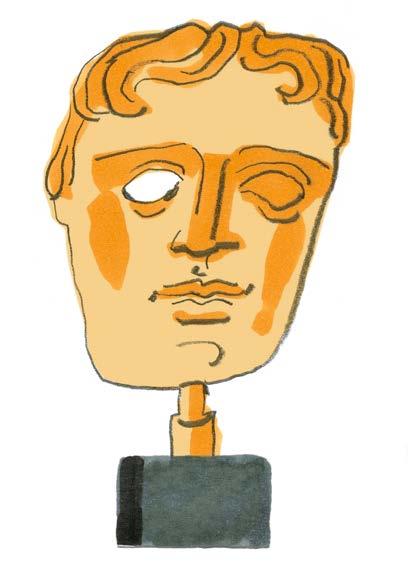
14
Molly Maloney.
BECOMING ALAN
WHEN ILKKA VILLI arrives at the office in the morning, he promptly suits up in a full-body spandex outfit and gets to work pretending to be an action hero.
To gamers, he is known as the face of Alan Wake himself. Together with his voice acting partner Matthew Porretta, he brings the enigmatic author to life in the game through motion and performance capture.
“Acting in a video game is very hard and meticulous work. As an actor, you’re at the mercy of technology and the team of professionals surrounding you, because so much of the final product is their handiwork,” he muses.
“EVERYTHING ALAN DOES, I’VE DONE ON CAMERA.”
With 19 years of experience and several big-budget game projects under his belt, Villi could be called Finland’s foremost expert on the topic. While superstars like Mark Hamill, Kristen Bell and Keanu Reeves have since lent their likenesses to video games, such occurrences were still rare when Villi began his career.
“Lots of people still think of video game acting as just

voice acting, but these days it is so much more. Everything Alan does, I’ve done on camera – from basic running, dodging and shooting to more complex emotions and reactions.”
Villi also acts in traditional movies and TV shows, and the experience of shooting a video game is quite different from them. Scenes are shot in an empty studio, with motion sensors stuck on the actors’ suits to make sure their movements can be faithfully translated into animated graphics. Body and face work are captured separately, making the process time-consuming and demanding for the actors.
“In a way, it is the purest form of acting in the sense that there is no set and no props to play off of. It is all about imagination. Thankfully I’ve always been good at shutting the world out and immersing myself in a good story,” Villi says.
Looking back at his long career, Villi is especially thankful for today’s technological feats.
“Back when I started, performance capture was still in its early days. Now they can replicate even the tiniest little muscle twitches and micro expressions in the final product. What I do as an actor actually carries over into the game, and it’s very rewarding to see.”
15

“MY HOME IS MY SAFE HAVEN”
Finland has a plan to eradicate homelessness by 2027. We asked three formerly homeless people to share their favourite things about their homes.
TEXT AND PHOTOGRAPHY KAISU KAPLIN
16

17
“CRAFTS AND KNITTING have always been my thing. While living in this crisis apartment in a supported living unit, I make and sell mittens, socks and sweaters for my friends and acquaintances. I can knit for hours and it sometimes makes my neck so stiff it’s almost funny. Making things with my hands is my passion and it makes me feel safe. I lived abroad for many years. I ended up losing my job, and after a while, my home too. Overnight shelters were available only occasionally, and when I couldn’t find a job, I saw no other option than returning to Finland. Luckily I got this place soon after my arrival.

This flat was furnished, but I made it cozier with house plants and curtains. For me, home has to be visually pleasing. I would like to swap this turquoise table for a white one, for example.
This is a temporary home, but as a perfectionist, I keep everything tidy and clean it often. I’m a professional chef, so I appreciate cleanliness and being able to cook my own meals. When you are homeless, what, when and how you eat is out of your own control.
Three things I love the most here are having a roof over my head, a door I can close and a tablet I can use to listen to crime podcasts.” LEENA, 48
18
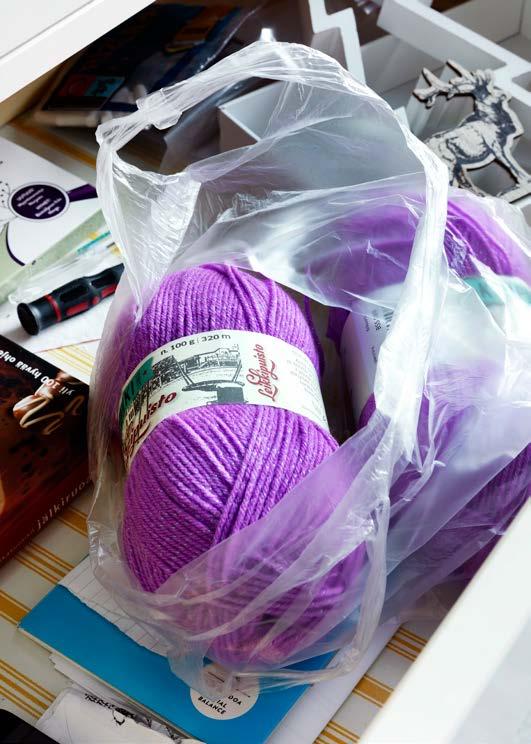

“MAKING THINGS WITH MY HANDS IS MY PASSION AND IT MAKES ME FEEL SAFE.”
19

“THIS RED rya rug holds great emotional value for me so I hung it on the best spot. It’s a wedding gift from my parents and reminds me of them. We didn’t speak to each other for almost 20 years but have recently become close again. The salt crystal lamp is also a gift from my mother, she says it is believed to treat psoriasis.
Before losing my home, I lived in a much bigger place, so a lot of my things are now in storage.
One needs a place one can leave from and return to. When you have a home, you have your own space and it’s up to you to decide who gets to walk in. At home I can rest and have a break.
The leather footstool is one of my favourite items. I spend a lot of time on it playing Playstation games. An ice hockey game is my favourite. Once I played it for 14 hours in a row.”
MARKKU,
53
20
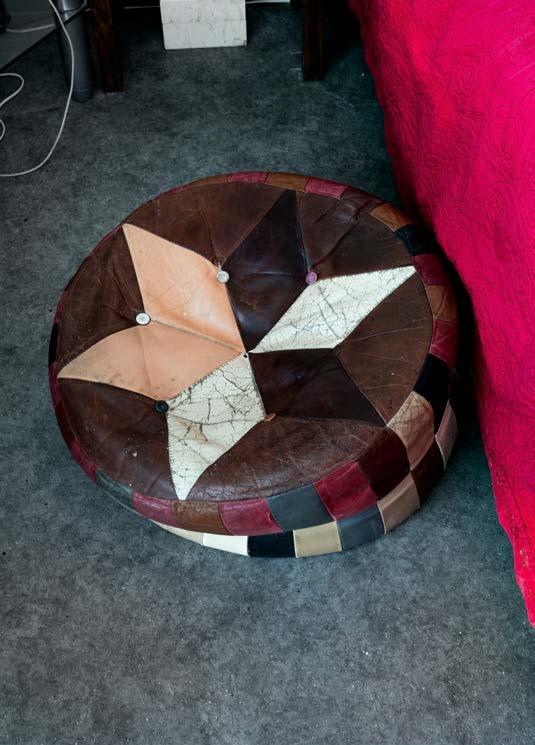

“ONE NEEDS A PLACE ONE CAN LEAVE FROM AND RETURN TO.”
21
“I GOT MOST OF MY FURNITURE AS DONATIONS AND I MOSTLY USE IT TO PILE CLOTHES AND PAPERS ON.”
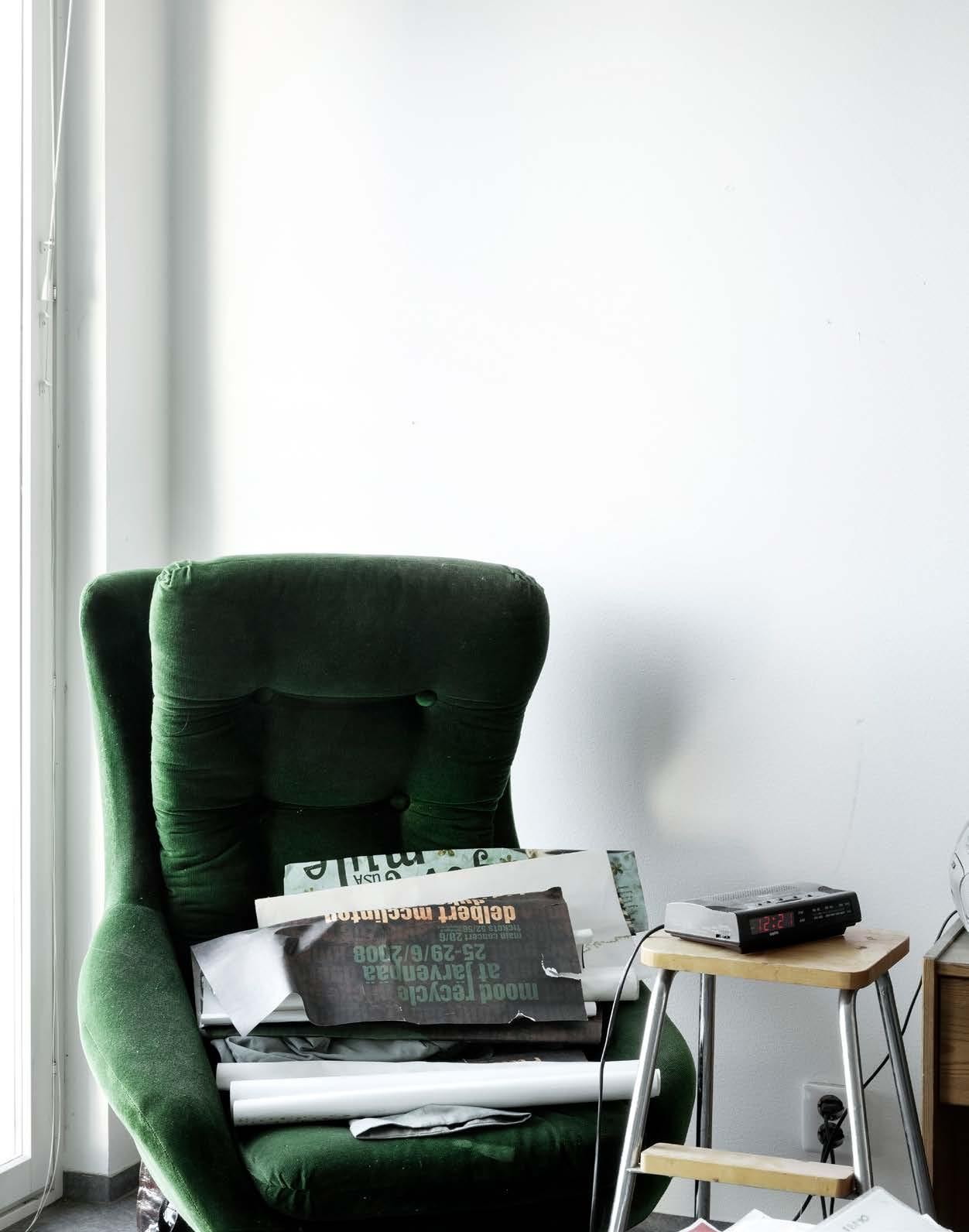
“
MY SOFA is so comfortable I rarely use my bed. I often fall asleep here with my television on. My life happens mostly outside, but in the evenings I don’t need to find a place to crash anymore – I can fall asleep on my own sofa and that is so essential.
I have lived in this studio flat for a bit over two years now. For me having my own space and the feeling of control are the most important things about it. I can decide whether I want to open the door or close it to protect myself from the outside world.
My home is my safe haven, and I don’t care so much about the material things in it. I got most of my furniture as donations and I mostly use it to pile clothes and papers on. I still definitely wanted some furniture; it would feel awful to live with just a mattress.
These festival passes from Puistoblues festival are my most valued possession, and I also have a lot of Puistoblues posters. I’ve volunteered at the festival for years now and really enjoy the team spirit we have with the group of volunteers. Festival passes remind me of past summers and the good times ahead next summer too.”
HEIKKI,
58
22

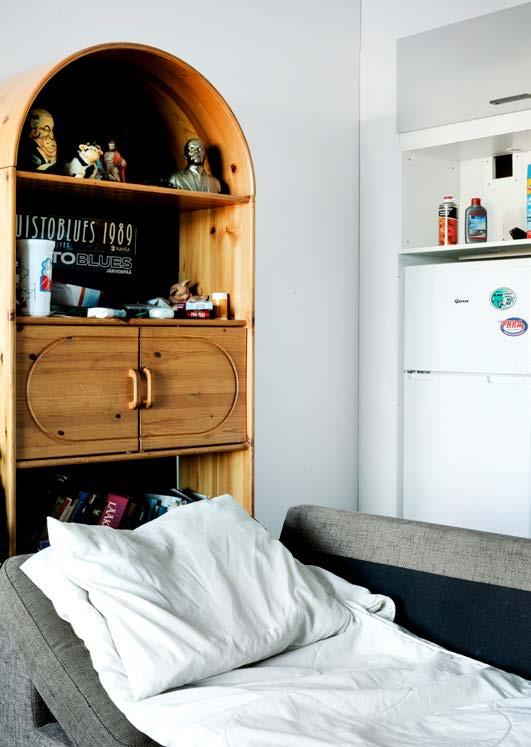
Home is where the recovery starts
Finland is the only country in the European Union where the number of homeless people has declined in recent years. This is mainly thanks to a strategy called “Housing First”.
Traditionally, housing has been seen as the final goal of a social recovery process. Housing First turns the idea to its head and puts housing at the top of the list: when you have a safe
home it’s easier to get back on your feet and start getting your life in order. This means that sobriety is not required before you can have housing and that professionals at housing units will help with benefits, banking and health issues.
As part of commitment to the model, former homeless shelters have been converted into housing units to create new housing stock with supportive services. Since the
launch of Housing First in 2008, the number of homeless people in Finland has decreased by 30 percent, and the number of long-term homeless people by more than 35 percent. The current government has a plan to eradicate homelessness by 2027.
Providing people with homes sounds costly, but a study by the Finnish Ministry of the Environment shows it can actually save money.
Finland has invested €250 million in building new homes and hiring residential support workers. At the same time, savings in emergency healthcare, social services and the justice system total as much as €15,000 a year for each formerly homeless person.
Leena, Heikki and Markku are customers at Rinnekodit Housing First units. Their names have been changed to protect privacy.
23
WOOD FOR THOUGHT
Clothes, car batteries, fish feed — you name it. Some of the world’s most creative and commercially promising wood-based innovations come from Finland, and many are made from industry by-products. Here are just a few.
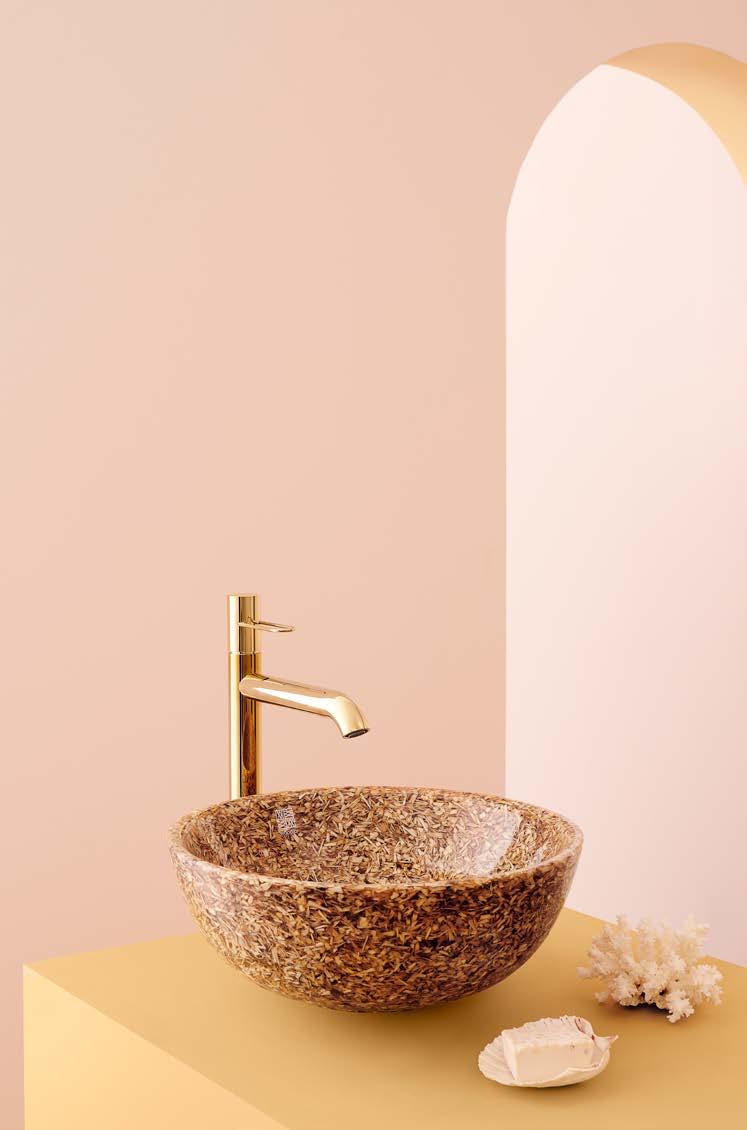

BATTERIES FROM TREES
What? Stora Enso’s Lignode is a battery material made from trees. Why? The rise of electric transportation and devices spells an increased demand for batteries. Almost a third of a lithium-ion battery consists of graphite, a material with a high environmental impact. Lignode could replace synthetic graphite in vehicle and consumer electronics batteries, making battery production more sustainable. Lignode is based on lignin, a common by-product in the production of cellulose fibre with numerous applications, from bioplastics to food and even asphalt.
Where and when? Pilot production of Lignode started in 2021 and development work continues with customers.
DENTAL IMPLANTS FROM CELLULOSE
What? VTT has produced dental implant crowns from nanocellulose.
WOOD COMPOSITE FOR WASHBASINS
What? Woodio is the world’s first 100-percent waterproof solid wood composite material.
Why? Most of the world’s millions of sinks, toilets and other bathroom furnishings are made with ceramic, a material with a big carbon footprint and a tendency to fracture. Waterproof wood composite offers a durable, lightweight and visually attractive alternative. Woodio’s sinks, bathtubs, toilet seats and interior panels are made from aspen and birch chips sourced from the side streams of the Finnish forest industry. While in use the wood chips store carbon, and at the end of their life cycle they can be used for energy production. Where and when? Available online and from retailers across the world.
Why? Before modern dentistry and material science, many people wore dentures made of wood. Now, the researchers at VTT, Technical Research Centre of Finland, have developed a nanocellulose-based material that could be used in dental implant crowns. The material’s structure is inspired by the exceptionally strong legs of a mantis shrimp and is significantly lighter and harder than the ceramics used in traditional dental crowns. Other potential applications for the material include sporting equipment, bulletproof vests and aircraft hulls.
Where and when? Research and development is ongoing.
TEXT LOTTA HEIKKERI
24
FROM SAWDUST TO
FISH FEED
What? MonoCell is a single-cell protein made from sawdust.
Why? Sawdust is an ample byproduct in the woodworking industry. While a big portion goes to pulp and energy production, new applications are needed to maximise its use. Scientists at the Natural Resources Institute of Finland (known by its Finnish abbreviation, Luke) have used sawdust to produce a high-quality single-cell protein. One of the many possible uses for MonoCell is fish feed, in which it could replace fish or plant protein, saving valuable fish stock and land areas.
Where and when? Evaluation and development continue as part of Luke’s CellFood project.

LIGHTER CAR PARTS

BIODEGRADABLE FASHION
What? Spinnova is a textile fibre made without chemicals from the same cellulose as paper.
Why? The fashion industry produces around 10 percent of global carbon emissions and uses large quantities of water and chemicals. Spinnova’s technology turns cellulose into a versatile textile fibre that uses 99 percent less water than cotton. The textile can be recycled without loss of quality or the addition of virgin fibres, and is entirely biodegradable. Brands like Marimekko, Adidas and The North Face have released their Spinnova collections.
Where and when? The first commercial-scale factory opened in Finland in 2023.
What? UPM’s Renewable Functional Fillers can make plastic parts lighter.
Why? Many rubber and plastic products include functional fillers, small particles that augment the product’s properties. UPM’s BioMotion Renewable Functional Fillers, made from hardwood, could replace oil-based functional fillers in all kinds of plastic and rubber car parts, such as panels, door seals, tyres and hoses. They are not only a more sustainable option – they’re also lighter than traditional filler materials.
Where and when? Production of Renewable Functional Fillers begins in late 2024 at UPM’s biorefinery in Leuna, Germany.
ALTERNATIVE FOR PLASTIC
What? Paptic aims to replace plastics and other singleuse materials in packaging. Why? Packaging is often needed, but can burden the environment. Paptic, a wood-based, moisture-resistant material, can be used for bags, packaging and more. It has a distinctive, textile-like feel and is recycled together with packaging papers and cardboard. Scalability is why the technology really stands out: Paptic can be produced using regular paper machines with only minor modifications. Where and when? Paptic materials are in use in more than 50 countries.
25
THE HEAT IS ON
Inspiration from Finland is prompting a global sauna boom thanks to architects like Sami Rintala. His designs can be found in Japan, Norway, Romania and the UK. Rintala tells us how saunas got so hot.
FOR THE Finnish architect
Sami Rintala, the joy of a good sauna is all about extremes.
“It’s about changing from hot to cold and how that is good for your mind,” he says, describing the appeal of one of his favourite pastimes.
Extremes are also at the heart of Rintala’s approach to designing saunas, something that is keeping his Norwaybased architecture practice, Rintala Eggertsson, busy as different nationalities get the bug for this most Finnish of activities.
“Sauna architecture is about contrasts and primal values,” says Rintala. “You are working with elemental things: dark and light, cold and warm, private and public space.”
Since moving to Norway 20 years ago and working on a variety of sauna projects, Rintala has become an “ambassador” of sauna culture.
“As a Finn living abroad, you become an ambassador of your culture,” he says. “There
could be worse things because I really love sauna and bathing!”
In addition to Finland and Norway, Rintala’s firm has also designed saunas in the UK and is currently working on projects in Romania and Japan. The Finnish Sauna, which Rintala designed for the 2022 London Festival of Architecture with students from the University of Westminster and support from The Finnish Institute, can now be found on the Isle of Wight.
Similar wooden sauna huts are popping up all over the UK, from Brighton and Folkestone to the beaches of Pembrokeshire in Wales. The British Sauna Society says 73 such saunas are operating in the UK, mostly at beaches or
“SAUNA ARCHITECTURE IS ABOUT CONTRASTS AND PRIMAL VALUES.”
lakes, up from 49 a year ago. The increase has been fuelled by the growth in wild swimming and healthy living.
Although the oldest public sauna still in use in Finland was built in 1906 in Pispala, Tampere, historians believe sauna culture got going around 10,000 years ago. The earliest saunas were pits dug into the ground with a pile of stones at the bottom, heated by a campfire. Where Finland differs from other countries is that its early inhabitants never swayed from their love of sauna.
“People living in Finland needed saunas because of the climate. Plus, with so many forests, there was always wood to build them and firewood to burn,” says Rintala.
He thinks people also crave somewhere to escape from the encroachment of technology, and saunas are phone-free zones.
“Maybe saunas are the only place where people can

PHOTOGRAPHY
TEXT SUSIE MESURE
DAN MARINER
26

27
Architect Sami Rintala has become an unofficial sauna ambassador.
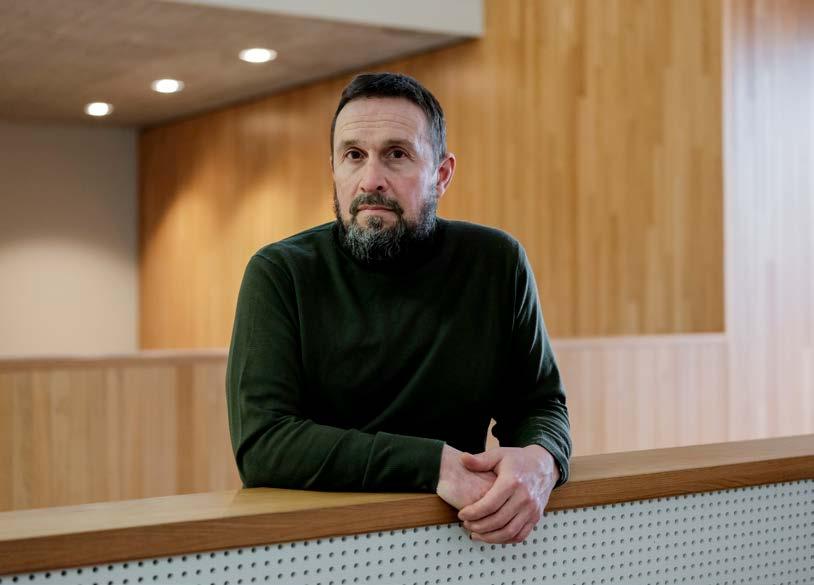
really talk without phones disturbing their conversations.”
He fires up his home sauna almost daily to sit and chat with his wife and 19-year-old son.
“We have the best discussions there,” he adds.
A desire for social cohesion is reviving demand for public saunas, which fell out of favour as more people opted for private saunas.
“Public saunas are a meeting place,” says Rintala, adding that 20 years ago there were only two or three public
saunas in Helsinki compared to more than 20 today. The best-known is Löyly, which is Finnish for “sauna steam”, a six-million-euro public sauna that opened in 2016 designed by architects Anu Puustinen and Ville Hara of Avanto.
When temperatures are Arctic outside, there are few places to meet and socialise without buying anything. Rintala makes a comparison with a shopping centre: “It’s much nicer to hang around chatting in a sauna where you are buying
“MAYBE SAUNAS ARE THE ONLY PLACE WHERE PEOPLE CAN REALLY TALK WITHOUT PHONES DISTURBING THEIR CONVERSATIONS.”
an experience rather than something material.”
His advice for anyone working on a public sauna project is to keep things simple.
“If you want to make a sauna accessible for lots of people, make very simple bathing structures that are very cheap to use and to maintain,” he says. “There are no rules other than to have a good bathing experience.
“One thing everyone should understand is that saunas are very humid so it’s important to keep heating them after use so they can dry out. When it’s minus 20 C (-4 F) in the winter, you need to dry the wood before it freezes.”
His top tip is to keep windows small and forget about having a view.
“Very large windows will ruin the correlation of the oven and the room. Plus the bigger the window, the bigger the oven you will need. Views aren’t important. A sauna is a room where you close off the world to understand yourself and other people better. You can go out and see the landscape afterwards.”
And remember the food.
“Food and drink are important to the sauna experience. I like sauna evenings with friends. A perfect evening is about being in the sauna as long as possible and having your dinner afterwards. What you eat is personal, like what you wear, but I like a cold beer and some salty meat: you have everything you need.”
28
Sami Rintala says he has the best discussions in sauna with his family. He also loves sauna evenings with his friends.
5 tips for enjoying the sauna like a Finn
1
TAKE A SHOWER FIRST . Though the sauna is technically for bathing, you should take a quick shower before you go in. It’s considerate to your fellow sauna-goers and also makes the heat more bearable.
2
WEAR WHAT MAKES YOU COMFORTABLE. Contrary to popular belief, you do not have to be nude to enjoy the sauna. A bathing suit or even a towel is perfectly acceptable attire. In some public saunas in Finland swimwear is actually required.
3
COOL OFF OFTEN. Don’t be afraid to step out of the sauna when things get too hot for you! Finns often cool off by hopping into the lake or popping outdoors and go back in when they feel up to it.
4
DON’T BE SCARED OF THE VIHTA. The vihta – also called vasta in some regions – is a bundle of birch twigs Finns gently lash themselves with in the sauna. It may look intimidating at first, but is great for your circulation and skin, so give it a go!
5 ENJOY THE AFTERGLOW. To many, the best part of sauna is the euphoric feeling it gives you afterwards. When you’re done, make sure to sit down with a nice, cold drink and soak in the endorphins.
29
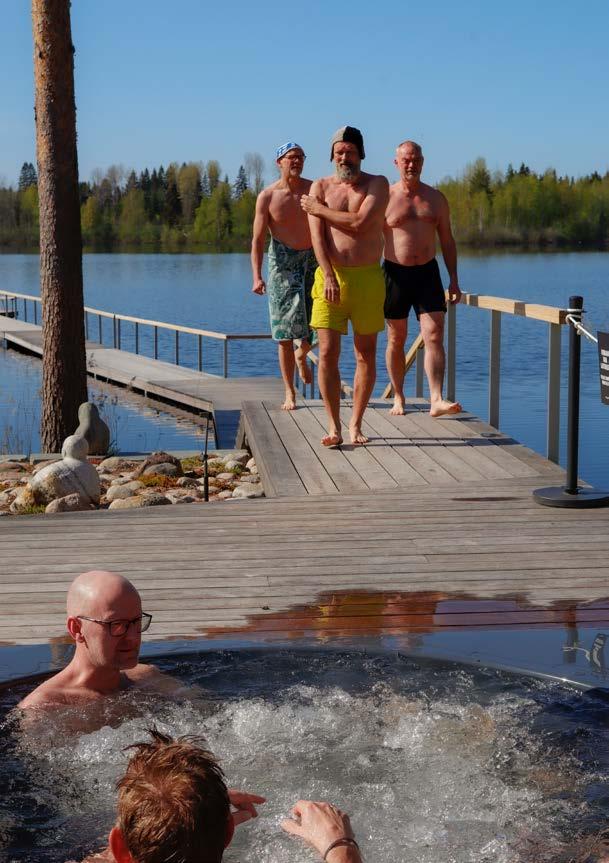
A SAUNA FOR EVERY TASTE – AND THEN SOME
There are over three million saunas in Finland –in theory, enough for all Finns to bathe at the exact same time! While most of them are privately owned, public sauna culture is also thriving, and the variety of options available is staggering. Here are a few outstanding picks for those looking to experience the real deal.
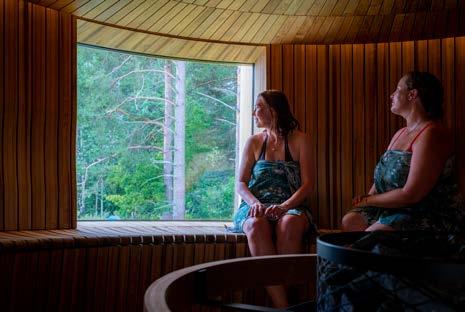
Serlachius Art Sauna, Mänttä
Located on the lakeshore behind Art Museum Gösta, the Serlachius Art Sauna is a masterpiece of unique, modern architecture, with works of art decorating its lobby and lawn. Its circular steam room has a calming, timeless ambiance, merging skilled Finnish carpentry and contemporary design. Even the water pails, scoops and textiles in use are commissioned and designed specifically for Serlachius. A must-see destination for art lovers!
HELSINKI’S MOST POPULAR PUBLIC SAUNA, LÖYLY, IS SITUATED JUST A STONE’S THROW AWAY FROM THE CITY CENTRE.

Löyly, Helsinki
In Finland, one does not have to stray far from the city to find a sauna. A perfect example of urban sauna culture is Helsinki’s most popular public sauna, Löyly, situated just a stone’s throw away from the city centre. Löyly’s saunas and lounging areas are gender-neutral, so friend groups and families can enjoy the experience together. After a relaxing visit to its smoke and steam rooms, visitors can cool down by taking a dip in the sea while admiring the city skyline.
TEXT JOHANNA TEELAHTI 30
Hot tub or a dip in the lake? Serlachius Art Sauna has both.

Rauhaniemi Folk Spa, Tampere
Tampere has been officially declared the sauna capital of Finland, and for a good reason. It has over 50 public saunas, dotted throughout the beautiful landscape of the lakefront city. One of its historic gems is Rauhaniemi Folk Spa, a traditional, atmospheric sauna complex that draws in people of all ages and backgrounds year-round. In the winter adventurous visitors can even have a go at ice swimming and reflect on the experience in Rauhaniemi’s tranquil yurt sauna, where talking is forbidden.

Arctic Sauna World, Muonio
In Lapland, close to the Pallas-Yllästunturi National Park, lies Arctic Sauna World. The resort has five different saunas, four of which are named after elemental gods from Finnish folklore. First-timers may want to begin in the gentle infrared sauna, making their way to the old-fashioned, fiery smoke sauna. The resort’s crown jewel is a sauna specifically dedicated to watching the northern lights, with large panorama windows overlooking the nearby lake Jerisjärvi.
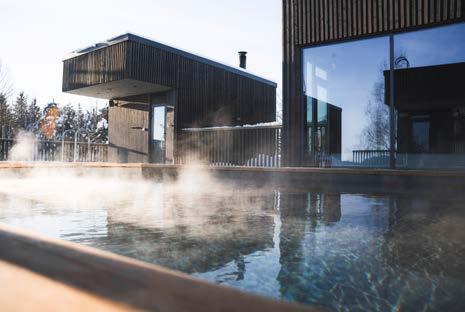
Lähde Forest Spa, Nilsiä
True to its name (lähde means “spring” or “fountain” in Finnish), Lähde Forest Spa is a relaxing oasis in the middle of the woods near Tahko, one of the most popular skiing destinations in Finland. Its most impressive sauna towers high above the treetops, offering breathtaking views of the surrounding nature. The kid-free resort has both heated and cold outdoor pools, complete with a poolside pavilion for quiet relaxation. It also offers wellness courses to complement the sauna experience.
31
“WE
ARE ALL EQUALLY SMALL BEFORE THE SEA”
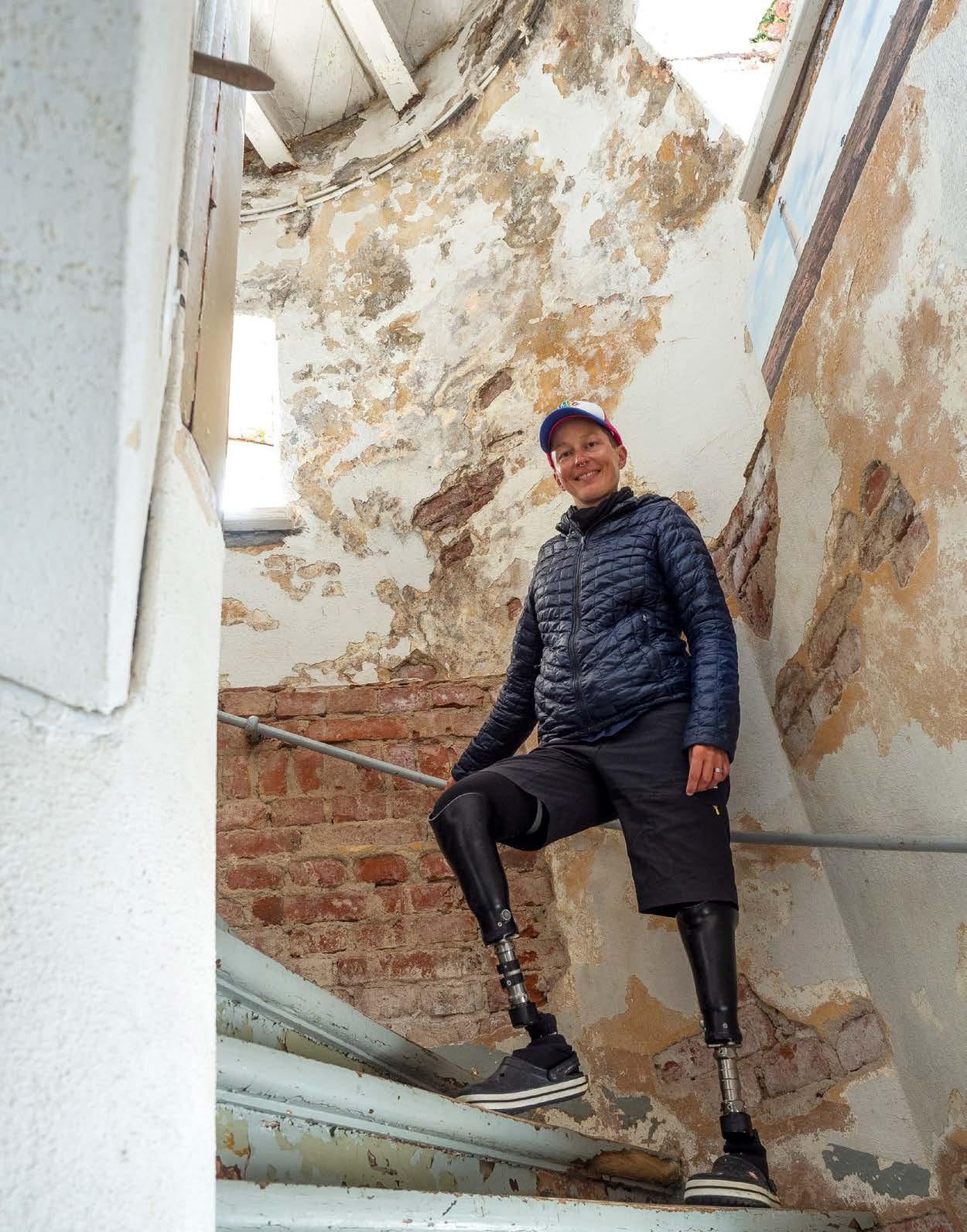
Award-winning artist and adventurer Kaisa Leka wants to ensure that nature is accessible for everyone. Her prosthetic legs have taken her across the United States and all the way to the Arctic Sea, but her hidden gems are on the countless islands of the Finnish archipelago.

TEXT LOTTA HEIKKERI PHOTOGRAPHY CHRISTOFFER LEKA
32
Watch Kaisa’s video interview:
“LANDING ON the island was very difficult because of the wind and the waves. Suddenly, people appeared from the lighthouse with helmets on their heads and brooms in their hands.”
This kayaking trip to the Märket lighthouse, located on a small treeless island on the Finnish-Swedish border, is one of Kaisa Leka’s alltime favourite memories. It has everything she wants in an adventure: beautiful nature, physical activity and a reminder that even though trouble may be inevitable, things usually turn out just fine. The people were volunteers working in the lighthouse, hurrying to the kayakers to guide them to a safer landing spot.
And the helmets and brooms? Protection from terns, seabirds nesting on the remote skerry in the vast Finnish archipelago.
“That was a very exceptional kayaking trip, with a very exceptional welcome, in a very exceptional place. We camped there for three days as the wind picked up again. The volunteers heated the sauna for us so we could wash up,” she recalls her story, smiling.
Adventures on new feet
Kaisa Leka is an award-winning comic artist and an unlikely adventurer who wants to show that the outdoors is for everyone.
She was born with “funny feet”, as she puts it, that caused her increasing pain and difficulties in moving. At 23 years old, she had her feet amputated from below the knees, an experience she has documented in her acclaimed comic book I Am Not These Feet

“WHEN I’M ON THE WATER, I FEEL THAT MY DISABILITY DOES NOT REALLY IMPACT MY MOBILITY.”
She began using prosthetic legs. The prosthetics allowed Kaisa to move around more freely. First, she started to do little bike rides. Soon, short rides turned into overnight adventures. And before she knew it, she was cycling lengthwise across Finland from Porvoo in the south to the Arctic Sea in the northernmost part of Norway with her husband, Christoffer. When they reached the vast open spaces of Lapland, Leka suddenly understood the magnitude of her accomplishment.
“I was thinking to myself: This cannot be real. I’ve cycled all the way up here.”
Leka’s adventure resume makes for an impressive read: cycling across the United States, paddling from the White Sea to the Baltic Sea, tackling the mountains of Morocco on a bicycle. Even though many of her adventures are weeks or months long, she consciously
Kaisa Leka’s tips to Finland
THE BALTIC SEA ARCHIPELAGO “The scenery is unlike anywhere else. Visiting the lighthouses is a unique experience; you can reach many of them by boat or kayak.”
THE FORESTED HILLS OF KAINUU, EASTERN FINLAND “One of my favourite views in Finland, the hills are simply beautiful. My father is from this region, so I spent a lot of time here snowboarding as a teenager.”
VARLAXUDDEN RECREATIONAL AREA, PORVOO ARCHIPELAGO “My favourite local place just outside my hometown. There is a wheelchair-accessible route that goes all the way to the seaside. This is where I tried winter camping for the first time.”
aims to appreciate the small outings closer to home in Porvoo.
“Heading outside and cycling for two kilometres on a sunny winter’s day or going to the local outdoor recreation area with snacks can be enough.”
Nature is for everyone
While Finland is widely known for its forests, lakes and fells, Leka recommends everyone visit the archipelago. She believes a kayak is the best way –and often the most accessible way – to explore the sea and its countless islands and skerries.
“We are all equally small before the sea. When I’m on the water, I feel that my disability does not really impact my mobility.”
Kaisa uses her work, art and social media presence to inspire everyone to go out and explore.
“I want to break the preconceptions people have about disability and what being outdoors as a person with a disability means,” she says. In recent years, authorities and organisations have built wheelchair-accessible routes, rest areas and toilets in many Finnish national parks and recreational areas. Leka has also been involved in a project that develops more accessible nature services for people on the autism spectrum or with other disabilities.
Leka is a huge fan of Finland’s famous “everyone’s right”, the law that allows everyone to enjoy nature, pick berries and mushrooms, or fish with a rod and line, regardless of who owns the land.
“Everyone’s rights should apply regardless of functional ability or any other factor. Nature is for everyone.”
33
5 REASONS TO LOVE FINNISH PORCINI MUSHROOMS
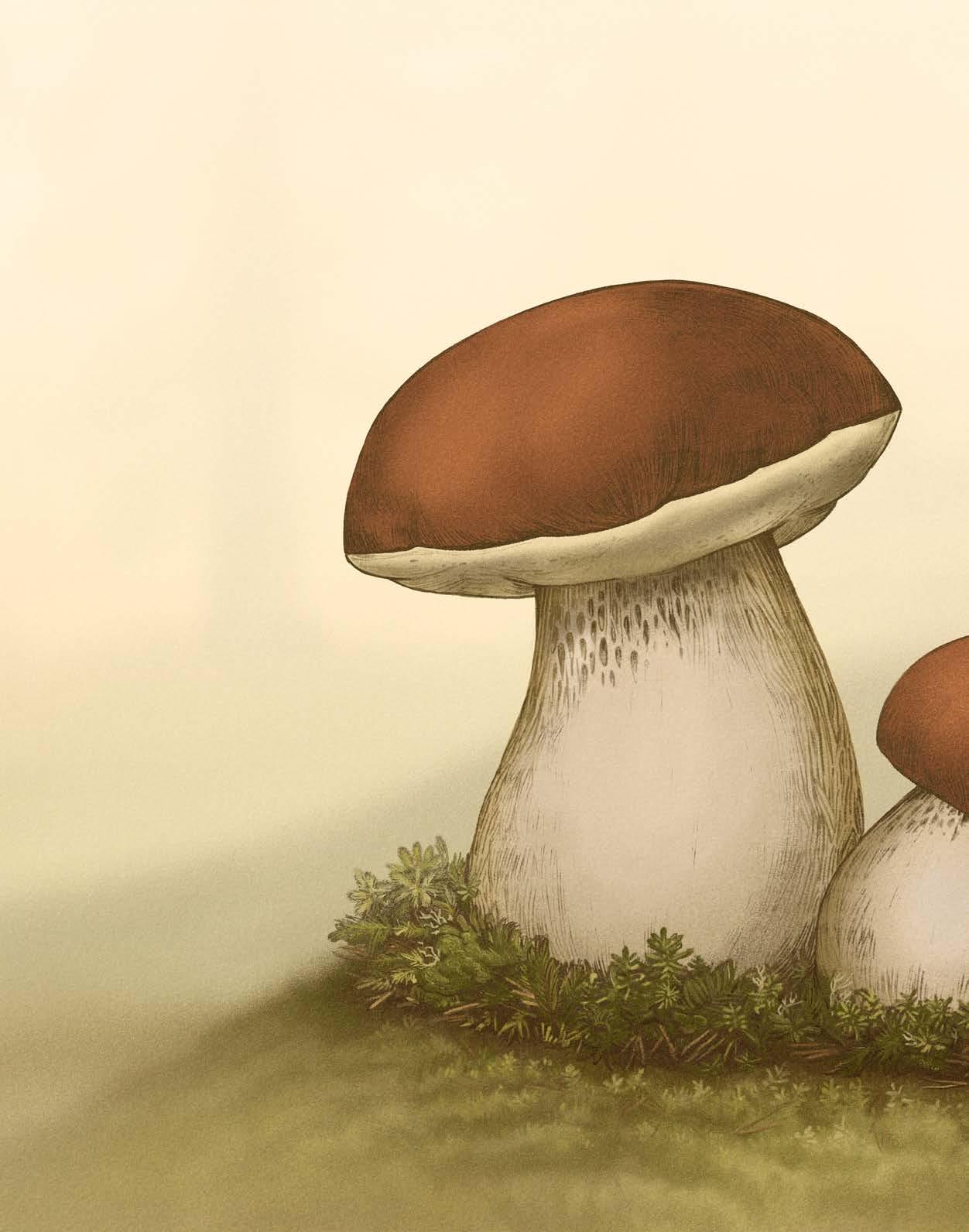
THEY ARE DELICIOUS
Finnish porcini mushrooms are loved all over the world. They are amazing in pasta, soup or on their own sliced thinly with some thyme, salt, balsamic vinegar and olive oil. Dried porcini mushrooms keep for years and have an even richer flavour than fresh ones.
Porcinis are an important ingredient in both French and Italian cuisine. Each year, hundreds of tons of Finnish porcinis are exported to Italy, so if you have a risotto at a Roman trattoria, chances are that the porcini in it have grown in a Finnish forest.
The word porcini means “piglets” in Italian. In English they go by “penny bun” and “king bolete”. These are only a few of the many names people use to refer to this beloved wild mushroom. Here’s why you should love them too.
TEXT NINNI LEHTNIEMI ILLUSTRATION HILLA RUUSKANEN
34
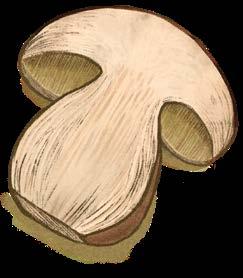
THEY ARE GOOD FOR YOU – AND THE PLANET
Many of us are looking for climate-friendly and healthy alternatives for meat, and mushrooms are a popular option. They are low in fat and have a small carbon footprint. Mushrooms contain significantly more protein than most plants – dried porcinis have 30 grams of protein per 100 grams. Porcinis are also a treat for your gut as they contain similar amounts of fibre as wheat bran.

THEY ARE BEAUTIFUL TO ALL SENSES
When you hold a porcini mushroom in your hands, you certainly know you’re holding something valuable. They feel heavy and dense, and their surface resembles the softest luxury leather. Their fresh woodsy, nutty aroma remains to be discovered by perfumers, but their beauty hasn’t escaped the attention of designers and artists. In recent years we’ve seen a whole boom of mushrooms in interior design, including mushroom-shaped lampshades, stools and candleholders as well as mushroom motifs in textiles and tapestries. Mushroom-inspired décor such as Finnish artist Teemu Järvi’s porcini posters or textile artist Elina Helenius’ linen towel collaboration with Lapuan Kankurit allows you to enjoy the beauty of mushrooms outside the foraging season.
THEY TEACH US THAT WHAT MATTERS IS ON THE INSIDE
When we think about mushrooms we usually think of the part that can be picked and cooked. This means we ignore the majority of the fungal organism: mycelium that lives in the soil interwoven with tree roots. Mycelium, which is a root-like structure of fungus, connects mushrooms to each other and to symbiotic trees. Mycelium works as the transfer system for water and nutrients; it’s how mushrooms feed. It also helps different plants in the forest to communicate.
THEY BELONG TO EVERYONE AND NO ONE
Most Finnish porcinis are in fact not exported but picked by Finns and enjoyed locally. Mushrooms are neither plants nor animals. Maybe that’s why mushroom picking in an autumn forest sometimes resembles treasure-hunting for mystical creatures.
Foraging is a great mindfulness exercise, too. It is difficult to think about deadlines and meeting agendas while finding your way to your secret porcini spots or looking for the right type of forest to find new porcini spots (young growth with spruce and birches), let alone figuring out if the mushrooms you’ve found are actually bitter bolete mushrooms and not porcini. It is not surprising about one third of Finns list mushroom-picking

as a hobby, according to a Statistics Finland survey.
Mushroom picking is a low-threshold hobby as in Finland forest mushrooms belong to everyone and no one regardless of where they grow. Thanks to the legal concept of everyone’s right all people residing or visiting Finland are allowed to pick wild berries, mushrooms and flowers as long as they are not protected species.
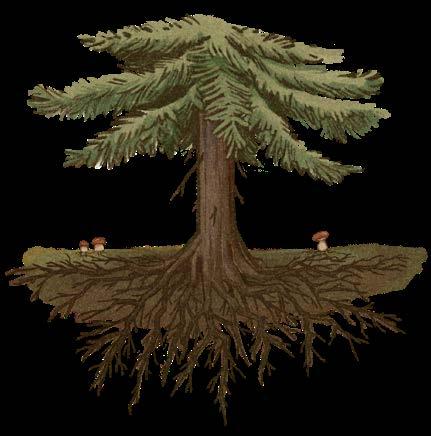
It seems to work as a communication network through electric impulses, but so far science has failed to explain how it functions. Nor do we know exactly how the symbiosis between the tree and the fungi actually works. This lack of understanding might at least partly explain why efforts to cultivate porcini (as well as truffles and chantarelles) haven’t been successful so far.
In fact, porcinis may have a lesson for us. They teach us that you need friends and networks to succeed, and that helping others will also help you. Some scientists even suggest mushrooms show that evolution is not always about the survival of the fittest – it can also be about the survival of those who form the best partnerships with each other.
35
Four expats reveal how living in Finland contributes to the way they view and experience happiness.
TEXT LAURA IISALO PHOTOGRAPHY OUTI TÖRMÄLÄ
MY
SMALL TOWN MAGIC
Futsal star Neide Oliveira moved from São Paulo to Imatra to make the most of her sport with likeminded people.
“I am a shy person but I’m open to the world. I like to experience different cultures and meet new people.
Futsal is my passion. I share tips and thoughts about the sport on social media and have over half a million followers. In 2022, the chairperson of River Vuoksi Futsal Club contacted me and invited me to Imatra to play and work for the team. I knew that the Finns were rated the happiest nation, but I also knew about the snow and cold weather during winter. After I gave it some thought, I felt
HAPPY
the need to go and see what Finland is all about. It was the right decision for me. Here I can put my passion into making women’s futsal better known.
I live in Imatra in south-eastern Finland where the population is around 26,000. I literally live in the forest, and I’ve realised that I don’t need much to be happy. When I open the door there are trees and fresh air. I am so grateful for that. I’ve also made new friends. To relax, I read books or write about my travels. Once a week I disconnect my phone and sometimes I go to the nearby lake and just sit there. I am so happy I moved here because I’m connected to nature. In São Paulo there was a lot more people, traffic and noise.
Finland can be cold and dark during wintertime, but people make the most of every day by going for a walk, spending time in nature or going to the sauna. I have learned that happiness doesn’t come by looking. It comes by living.”

36
PLACE
TWO SIDES OF BEING
Vietnamese start-up co-founder Jarvis Luong discovered that even running a business can be less stressful.
“I moved to Finland in 2016 to study computer science, and three years ago I co-founded Reactron Technologies. There are two sides to me. One stems from my Asian background, which puts a lot of emphasis on education and professional achievements. I’m always on the way to the next goal.
The other side of me, the personal one, is influenced by Finland. It means that I’m fully content with the current situation. I can sleep until eight or nine and enjoy

a slow morning before I start working. I can travel when I want, and I have a loving life partner. I’m happy with my life as it is.
Back home in Hanoi, Vietnam, I followed social media and trends a lot more, which made me often feel like I was missing out. When I had time off, I would usually spend a whole day in a shopping centre with my friends.
In Finland, my life is calmer than it was before. I like going on road trips with my group of five friends. I have visited many remote places such as Kuusamo and Kilpisjärvi. We just relax and enjoy the sauna or play board games. I feel peace in nature because I don’t have to think about anything.
Work here is relaxed because people are honest. As a matter of fact, this work environment makes me always feel ready for a new challenge.”
37
CREATIVE COMEBACK
Author Mintie Das has travelled the world but Finland is the place where her creativity blossomed.
“I was born in India and have lived all over the world. When I was two years old my mother died in a car accident, and my father took me and my brother to the United States and raised us as universal citizens. We came to Finland when I was 13, and it ended up being life-changing. I’d never felt such a sense of community before, like I belong.
I love the Finns’ ability to laugh at themselves, and their humble but no-nonsense culture. I even love the
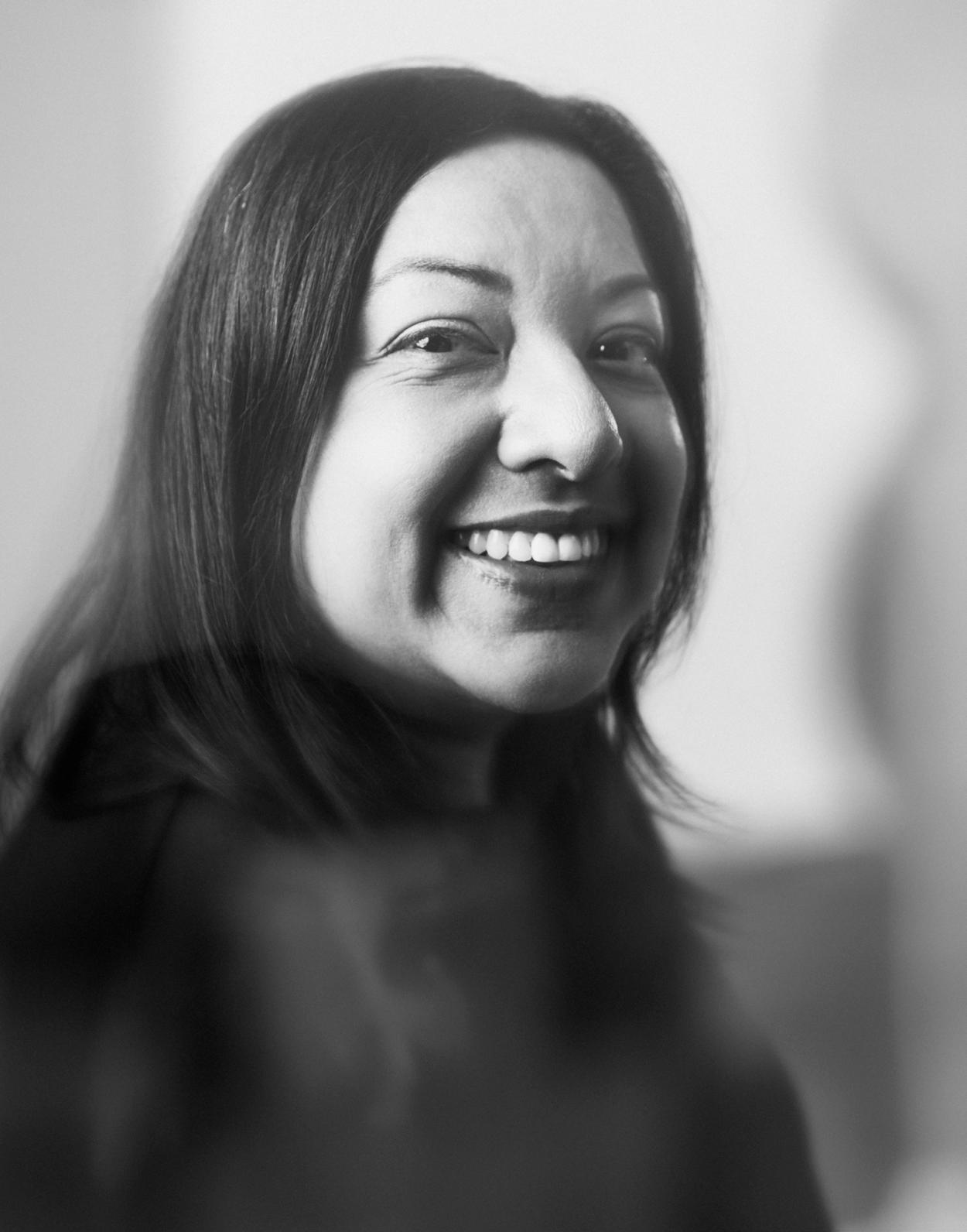
melancholy. Here it’s about simple things such as a walk in nature. Happiness is not forced but true contentment.
I had a successful career in PR in the US but 13 years ago I divorced and moved back to Finland to see if it was as good as I remembered. My passion is writing, and here I met amazing editors through work. I learned the art of creative writing and found my voice.
It is a privilege to live here. Education, public transportation, free healthcare, all of these things work. Finns may not approach you but I have approached everyone and made many friends that way. I met my musician husband here too.
When you move to a new country you can be an outsider or let the culture shape you. When I came to Finland, I started questioning my own values and embraced my creative side. I always say that my heart is Indian, my spirit is American and my soul is Finnish.”
38


“I FIND THAT PEOPLE CAN BE WHO THEY ARE.”
DISCOVERING SISU
Living in Finland has made Peruvian Vanessa Cueva Pastor De Valtonen more open-minded.
“I will graduate from nursing school next year. Back home in Lima, Peru, I studied dentistry and was very stressed. I was prepared to be under a lot of pressure here too, but studying is more relaxed, and the flexible schedule has allowed me to work part-time in a hospital.
When I moved here four years ago, it was winter and I couldn’t go outside for more than five minutes because it was so cold. By now, I have adapted to the weather and I go running outside even when it’s very cold. My favourite place is Lapland during winter – it’s amazing how silent
and peaceful it is. I think the Finns are happy because of the quality of life, security and gender equality – everyone has the same opportunities. There is also a lot of nature, the work-life balance is good and you get paid vacations. All of those things contribute to happiness.
Living here has changed me in many ways. People are relaxed and always straightforward. I like that attitude. My partner is from Finland and we live in the capital city Helsinki. The Finns love coffee and I’ve learned to enjoy it too. I often spend time with my friends in coffee shops or walking around the city, but I’ve learned to appreciate time just by myself too.
Living here has made me more open-minded. I find that people can be who they are. I’ve learned the importance of recycling and discovered sisu, the attitude of not giving up. I no longer let minor upsets get me down.”
39
Watch Vanessa’s and Mintie’s video interview:
MAGIC IN THE SUMMER AIR

Every year, music festivals fill cities, fells, forests and lakesides with live music and a peculiar kind of charm that can only be felt in the summertime. Let’s unpack the reasons that make Finland the promised land of summer festivals – and look at some unique festival experiences for those who have seen it all.
TEXT KRISTIINA ELLA MARKKANEN
40
Solstice festival is held on a fell next to the Arctic Circle. At this festival, the sun doesn't set at all.
SUMMER IN Finland is definitely one of a kind: intense and eagerly anticipated, so beautiful that it takes your breath away. It is worth celebrating, and that is exactly what Finns do: they gather to enjoy the long daylight hours and the freedom of summer festivals throughout the country. The cities, islands, lakesides and even fells host events packed with happy people, lovely food, live music and art spectacles.
There’s certainly magic in the air. Festival organiser and contemporary artist Aki Roukala has captured it in alternative boutique festivals such as Bättre Folk, held on the picturesque island Hailuoto, and Festivaali in Tampere. As the creative director of both festivals, he’s in charge of curating artist lineups that both satisfy and surprise music enthusiasts. That’s what keeps the scene fresh and original, he thinks.
“Finland is not globally well-known for big pop stars,”

Roukala says. “We don’t have to abide by the pressure of the global pop music industry. We’ve had time and space to cultivate alternative musicians and bands, which to me are much more interesting headliners than some of the more famous artists.”
Location, location, location
Alternative festivals remain marginal in Finland, where more mainstream events attract larger audiences and generate more profit. As the more intimate Bättre Folk draws around 3,000 daily attendees (and is sold out nearly every summer), Ruisrock in Turku’s Ruissalo island attracts over 100,000 visitors each year. It’s the second oldest rock festival in Europe and has been running since 1970.
You could call Ruisrock mainstream based on its lineup, but the setting is far from
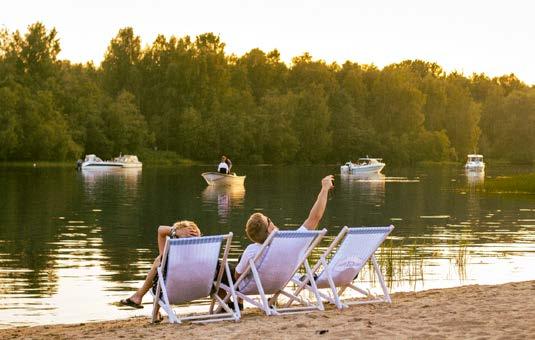
VARJO, JUNE 14–15, 2 0 24, KUUSISAARI, OULU It’s hard to imagine a better place for a summer festival. Kuusisaari park is located on an island just a short walk from the city
The
programme is full of surprises and has previously included poetry, circus performances and a funambulist, in addition to mainly domestic musical acts.
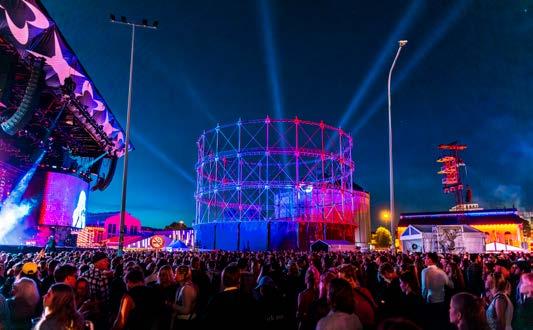
FLOW FESTIVAL, AUGUST 9–11, 2 0 24, SUVILAHTI, HELSINKI
Flow Festival turns the urban Suvilahti area into a three-day party that combines pop and indie icons, current and emerging artists, DJ sets, art and incredible food. Many Helsinki dwellers walk or ride their bikes to the festival venue, thanks to its convenient central location.
ordinary. The main stage is located on a sandy beach surrounded by open waters, and there’s something unique about thousands of people smiling and waving to greet the massive cruise ships that pass by on their way to Sweden.
“People spend full days within an enclosure at festivals. You need to respect festival-goers: everything from location to food has to add value to the experience,” Roukala says.
As illustrated by the beaches of Ruissalo, location plays a crucial role in creating the magical and even peculiar vibe of Finnish summer festivals, ranging from rocky gorges and medieval castles to urban areas surrounded by DIY skate ramps and ice rinks to parking lots.
Original acts you won’t find elsewhere
While bigger and more traditional festivals have established themselves, there’s always room for new ones to emerge. New festivals pop up
every few years, sometimes just for one summer. Some festivals only book artists who perform in Finnish. That’s what Aki Roukala tends to do.
“To foreign festival-goers our language sounds exotic and interesting, adding to the overall originality of Finnish cultural events. I don’t see why you couldn’t take over the world while performing in Finnish.”
At the end of the day, though, there’s one main secret ingredient to Finnish summer festivals: the people. Communality and ambiance make or break an event, Roukala says.
“The creative director curates the programme, the programme determines the audience, and the audience creates the atmosphere,” he sums up.
And it’s not hard to create a magical atmosphere under the midnight sun – or the smooth haze of dusk turning directly to dawn – when the only place you have to be is right where you are, in the middle of people, who are all here to enjoy.
Aki Roukala.
Photos: Maaria Koskelo, Samuli Pentti, Joni Stanley. 41
centre.
festival’s
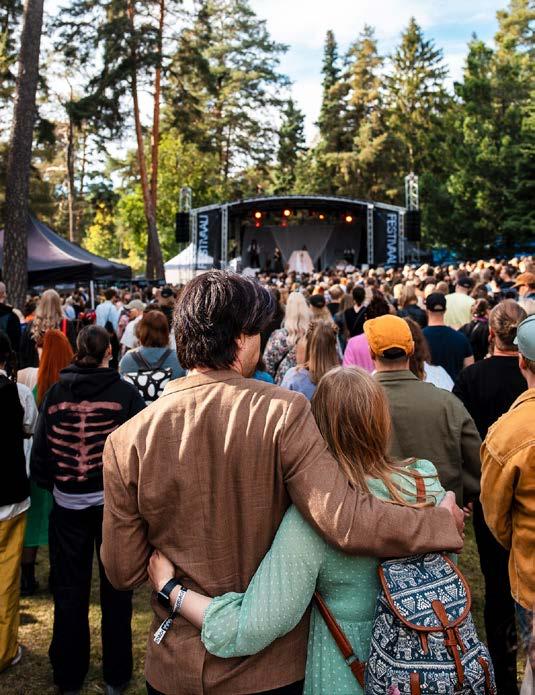
FESTIVAALI, AUGUST 23–24, 2 0 24, PYYNIKKI SUMMER THEATRE, TAMPERE Festivaali is a celebration of Finnish music. The outdoor theatre venue with its lakeside view impeccably sets the scene.

ROTUAARI PIKNIK, JUNE 28–29, 2 0 24, MANNERHEIM PARK, OULU This two-day garden party takes place in Mannerheim Park in Oulu’s city centre. The performers of this festival are probably familiar to most Finns, including classic rock bands and celebrated artists.

KESÄRAUHA
, JUNE 7–9, 20 24, LINNANPUISTO, TURKU The three-day alternative and indie music festival in Turku’s historical park by the medieval castle combines live music, visual experiences and participatory activities (silent disco, anyone?).

FOOD FIRST
The recipe for the perfect bite? Sustainable, local ingredients turned to world-class artisanal dishes, served with a smile in a laid-back festival setting.
While some festivals still rely on the familiar approach of fried food and hangover-friendly dishes, many are stepping up their game. Master chefs turn their award-winning restaurants into pop-up food trucks, and you can find festival food reviews in news media.
Some of the restaurants in, for example, Flow Festival’s selection, have been Michelin Guide restaurants, such as Grön and Shelter. Some Finns even attend music festivals primarily for the food, seeking the perfect bite.
MASTER CHEFS TURN THEIR AWARDWINNING RESTAURANTS INTO POP-UP FOOD TRUCKS
“You can see that many festivals are paying more attention to the food they serve. There are more artisanal dishes such as handmade burgers and fewer processed foods, with a focus on sustainable ingredients,” says sommelier Toni Feri. He is the co-founder of Let Me Wine, a Helsinki-based natural wine importing agency.
Indeed, some festivals no longer serve red meat, for example Flow Festival and Sideways in Helsinki. Many festivals already track their carbon footprint and invest in locally sourced ingredients.
Food and wine festivals, however, are a completely different ball game – and Finland excels at them too. Take, for example, the country’s largest food festival, Tamperrada, which specialises in pintxos or bite-sized dishes. Around the country, there are also festivals for burger lovers, garlic enthusiasts, fans of Italian cuisine as well as for wine connoisseurs.
42
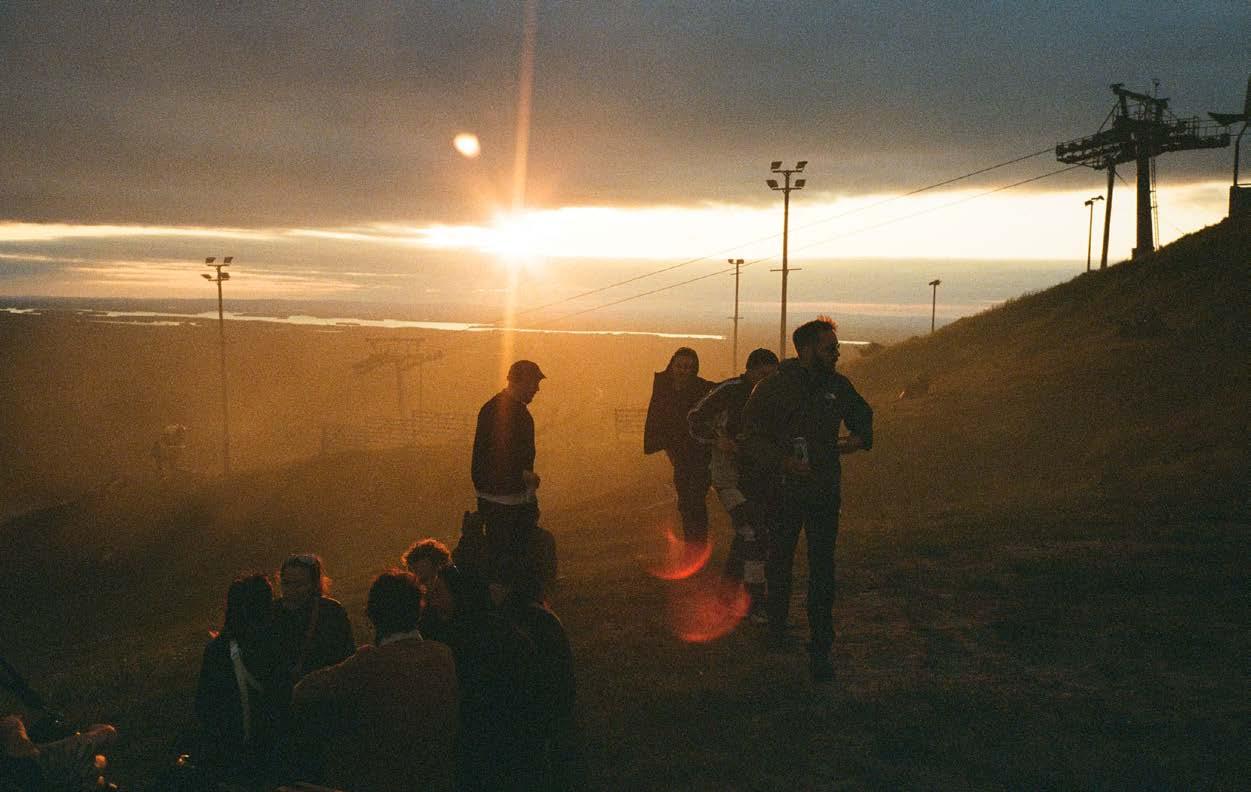
SOLSTICE FESTIVAL, JUNE 20–22, 2024, RUKA If you’re looking for an unforgettable midsummer experience, look no further.
Solstice Festival takes place in the middle of summer high above sea level at Rukatunturi. Carefully curated DJs play their sets against the stunning backdrop of pine trees and lakes.
ADVENTURES FOR THE CURIOUS LISTENER AND FILMS AROUND THE CLOCK.
TUSKA, JUNE 28–3 0 , 2 0 24, SUVILAHTI, HELSINKI Founded back in 1998, Tuska is Finland’s leading metal music festival. Covering genres such as Mongolian throat-singing, deathcore and metalcore, Tuska caters to a diverse fan base: it has broken visitor records two years in a row.
ODYSSEUS FESTIVAL, JULY 19–2 0 , 2 0 24, KORJAAMO CULTURE FACTORY, HELSINKI
Since 2021, the Odysseus festival takes over the cultural venue Korjaamo and its atmospheric courtyard. The festival highlights various genres ranging from art-pop to theatrical rock – or, as the organisers put it, provides “adventures for the curious listener”.

MIDNIGHT SUN FILM FESTIVAL, JUNE 12–16, 2 0 24,
SODANKYLÄ This film festival at the heart of Finnish Lapland brings legendary filmmakers, up-and-coming talents and a varied audience of cinema fans together for four relaxing days. Thoughtfully chosen films are shown around the clock in four venues while the sun never sets.
Photos: Jussi Hellstén, Roosa Maria Kauppila, Joni Stanley, Henri Väänänen. 43
PAIMIO SANATORIUM , designed by Alvar and Aino Aalto in 1929 and completed in 1933 as a tuberculosis hospital, is a global landmark of functionalist architecture. It is situated in a pine tree forest in southwest Finland near Turku. The sanatorium no longer functions as a hospital, but you can book a guided tour or even a room to spend a night.


MORE THINGS YOU SHOULD AND SHOULDN’T KNOW: finland.fi
Watch the video about Paimio Sanatorium:



















 Sam Lake.
Sam Lake.




















































